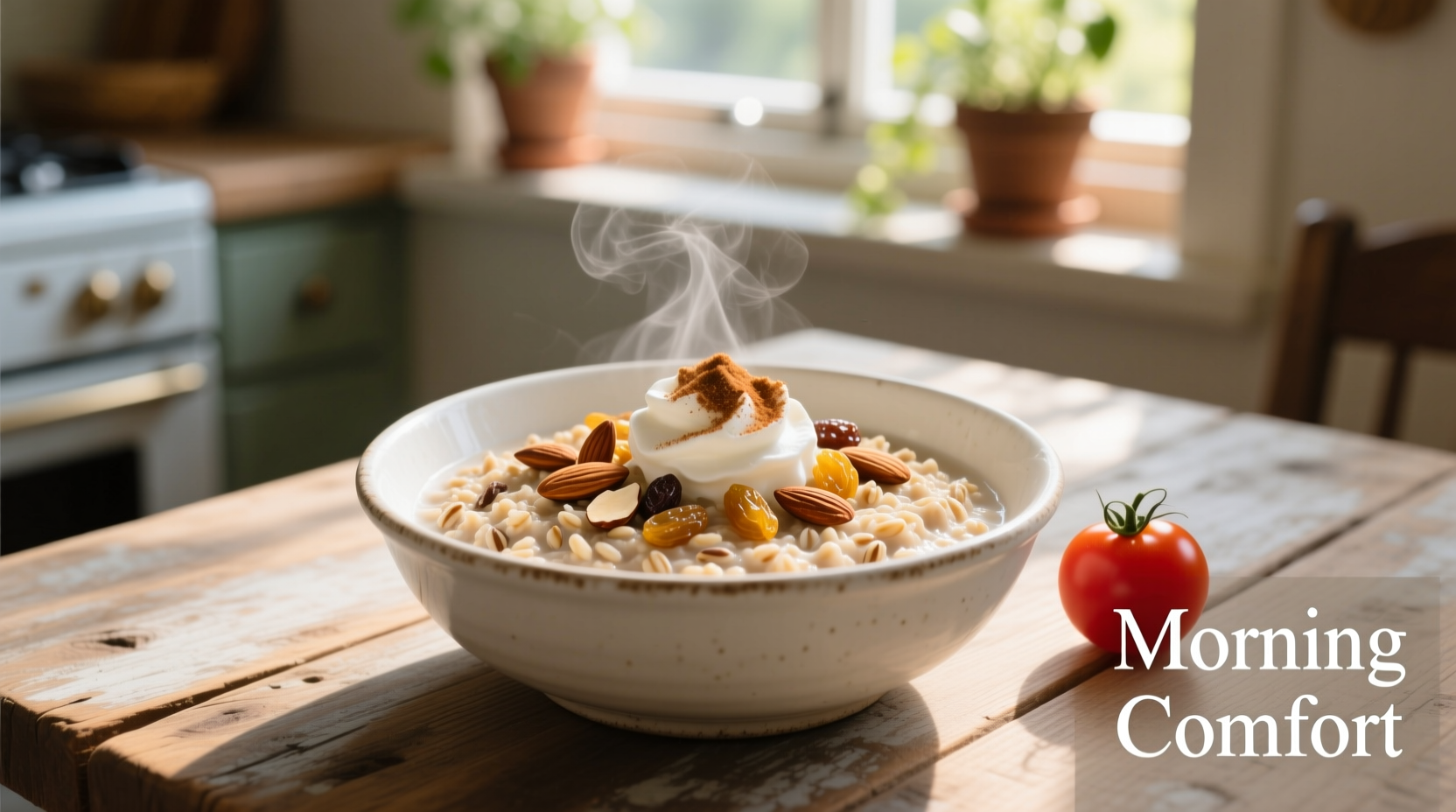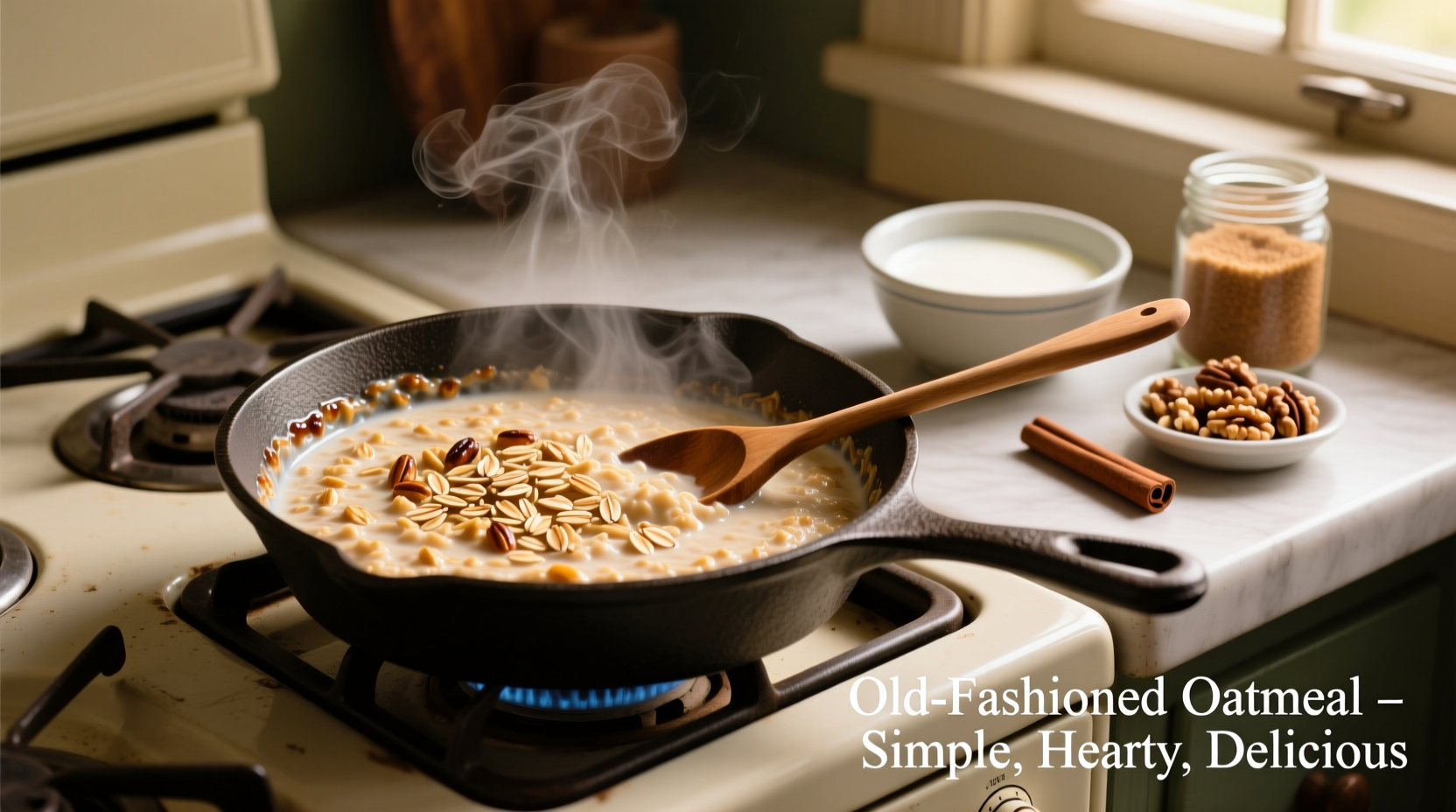There's something deeply satisfying about a bowl of properly cooked old fashioned oatmeal—creamy yet textured, comforting yet nourishing. Despite its simplicity, many home cooks struggle to achieve that perfect consistency that makes this breakfast staple so beloved. Let's explore the authentic method that transforms basic rolled oats into a memorable morning meal.
The Timeless Tradition of Oatmeal
Old fashioned oatmeal isn't just a breakfast option—it's a culinary tradition with roots stretching back centuries. Unlike quick or instant oats that have been pre-cooked and flattened, old fashioned rolled oats maintain their integrity through a more traditional processing method.
| Oat Type | Processing Method | Cooking Time | Texture Result |
|---|---|---|---|
| Old Fashioned Rolled Oats | Steamed and rolled | 25-30 minutes | Creamy with distinct texture |
| Quick Oats | Steamed longer and rolled thinner | 4-5 minutes | Softer, less distinct |
| Instant Oats | Pre-cooked, dried, and rolled extremely thin | 1-2 minutes | Mushy, uniform texture |
| Steel-Cut Oats | Whole groats cut into pieces | 45-60 minutes | Chewy, nutty, textured |
This comparison shows why old fashioned oats strike the ideal balance between cooking time and texture. According to historical records from the USDA National Agricultural Library, rolled oats became popular in the late 19th century when manufacturers discovered that steaming whole oat groats before rolling helped prevent rancidity while maintaining nutritional value.
Essential Equipment for Perfect Oatmeal
You don't need specialized equipment, but having the right tools makes the process smoother:
- Medium-sized heavy-bottomed saucepan (prevents scorching)
- Wooden spoon or heat-resistant spatula
- Measuring cups and spoons
- Timer (crucial for perfect consistency)
The Science Behind the Perfect Ratio
Understanding the water-to-oats ratio is fundamental to mastering old fashioned oatmeal. While many recipes suggest 2:1, the exact ratio depends on your preferred texture:
- Creamy texture: 2 cups water to 1 cup oats
- Thicker consistency: 1¾ cups water to 1 cup oats
- Overnight method: 3 cups water to 1 cup oats (refrigerate overnight)
Adding a pinch of salt at the beginning—not the end—enhances flavor development throughout the cooking process. This technique, documented in culinary science resources from America's Test Kitchen, allows the salt to integrate fully with the oats as they absorb liquid.

Step-by-Step Cooking Process
Follow these precise steps for consistently perfect oatmeal:
- Measure 2 cups water (or milk/water combination) into your saucepan
- Add a pinch of salt (⅛ teaspoon)
- Bring to a gentle boil over medium-high heat
- Stir in 1 cup old fashioned rolled oats
- Reduce heat to low and cover partially
- Simmer for 25-30 minutes, stirring every 5 minutes
- Check for doneness: oats should be tender but still have texture
- Remove from heat and let stand covered for 2-3 minutes
Avoiding Common Pitfalls
Even experienced cooks encounter these oatmeal challenges. Understanding these context boundaries will help you navigate them:
- Boiling over: Use a larger pot than you think necessary and keep the lid slightly ajar. As noted by food scientists at University of Minnesota Extension, oatmeal bubbles vigorously because the starches release during cooking create a viscous layer that traps steam.
- Mushy texture: Over-stirring breaks down the oats' structure. Stir only every 5 minutes during cooking.
- Dry oatmeal: If your oatmeal thickens too much, add 2-3 tablespoons of hot water or milk and stir gently.
- Scorched bottom: Use a heavy-bottomed pot and maintain low, even heat. Never walk away during the final 10 minutes of cooking.
Customizing Your Creation
Once you've mastered the basic technique, experiment with these authentic variations:
- Traditional Scottish style: Use a 3:1 water-to-oats ratio and cook for 45 minutes for ultra-creamy texture
- Cold start method: Combine oats and cold water, then bring to a boil for slightly chewier results
- Dairy alternatives: Substitute 1 cup of the water with almond, oat, or coconut milk
- Flavor infusions: Add cinnamon stick or vanilla bean during cooking (remove before serving)
Storage and Reheating Guidelines
Properly stored, cooked oatmeal maintains quality for 4-5 days:
- Cool completely before refrigerating
- Store in airtight container with surface pressed flat to minimize air exposure
- Add liquid when reheating—oatmeal absorbs moisture as it sits
- Reheat gently on stove for best texture (microwave can make it rubbery)











 浙公网安备
33010002000092号
浙公网安备
33010002000092号 浙B2-20120091-4
浙B2-20120091-4